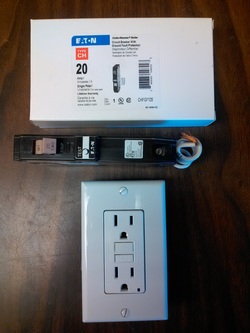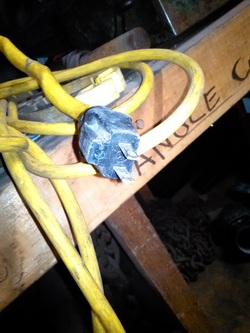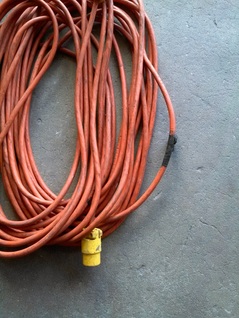ELECTRICAL HAZARDS

Ground Fault Protection
- 120 volt outlets, 15 or 20 amps near water or outside are required by code to be Ground fault Protected.
This protection can be provided in different ways:- Use approved Ground Fault Circuit Interrupter (GFCI) Breaker in the Electric Panel that feeds the circuit.
- Use approved Ground Fault Circuit Interrupter Outlets (GFCI) at first outlet in the circuit each location.
- Use extension cords with Ground Fault Circuit Interrupter built in to the
Electrical tools, like all other tools, need to be handled with care. Unsafe conditions such as loose connections, missing ground prongs, other defects, or careless hazards around the home. Avoid injury when working with electrical tools by following.
- When using electrical tools never handle, plug or unplug the tool with wet hands. Doing so may cause you to receive an electrical shock.
- Make a visual inspection of the tool and cord prior to use, look for frayed or damaged insulation on the power cord. as well as any extension cords that you will be using.
- Unless the tool double insulated , the male end of the cord should have three prongs. The third wire and ground prong connect any metal part of the tool to an earth ground. The point is to carry any "leakage" or fault current through that wire to the earth, rather than having it go through YOU to ground. That would be risk for electrocution.
- When possble, try to plug into a receptacle that is protected with a Ground Fault Circuit Interrupter (GFCI).

